One of the wild vines we have in our backyard is a Cypress Vine, also known as the Hummingbird Vine. It has taken over a corner of our backyard and spreading fast all over the large Sago palm tree. This vigoriously growing vine has fernlike foilage with small bright red trumpets that bloom for 3-4 months in the summer and fall.
This plant has attracted our first hummingbird in our area. It visits briefly about once a day checking out the red flowers on this vine. Now we put a new hummingbird feeder outside on a shepherds hook. They haven't found the feeder yet but it's in the right location close to the cypress vine. We'll see how well the hummingbird feeder works out by the end of the year. 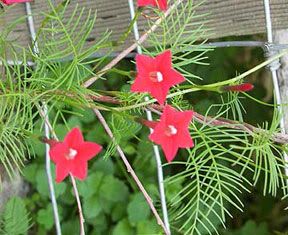
In this post I will briefly update the birds we've seen in our backyard recently.
First I'll start with the year-round residents who seem to have found a local home here. The most common bird around our feeders are the Mourning Doves. At least 2-3 visit everyday, while some days I see up to 8 or 9 doves fighting over a spot to eat. 
The Tufted Titmice are still here, usually in small groups of 2 or 3. I can always tell when a hawk is in the area since these titmice are very vocal to alert others of a possible threat.
The male and female pair of Cardinals are still here too. They usually travel together and occassionally the male will feed the female.
My favorites are a couple of Black-capped Chickadees that seem to travel with the Tufted Titmice often. These small chickadees are the most adorable birds ever, and their calls are even more adorable.
And finially here's a female Painted Bunting that recently showed up since the first cold snap that hit our area last week. I remember seeing these birds last fall/winter, so I'm pretty sure they are migrating from the north. 
Another first bloom, and this is now my 3rd hibiscus hybrid bloom from seed.
The top side-by-side pictures show the parent plants of Sweet Bippee (left) and Dragonsbreath (right). 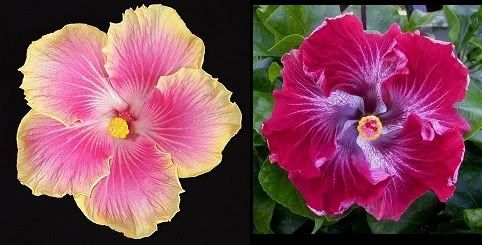
This one is full of colors. It has a pink/white interior that fades out to orange tips, with a slight yellow speckle on the edges. Here it is!
Today I was rewarded with an impressive first bloom on one of my hibiscus from seed. This plant is over 2 years old and finially blooming. It's another hybrid seed crossing from Australia.
The top side-by-side pictures show the parent plants where the seed came from.
Rosalind (left) and Dragon's Breath (right)
And here's the first new flower :)
The first day of September is welcoming after enduring two of the warmest months of the year. July and August have an average daily high of 92°F in Orlando. Even though it's still very hot and wet for weeks ahead, this day marks the beginning of a seasonal change. It means the beginning of Fall-Autumn on September 23, 2011. As days move on we can expect a slow transition of color and weather.
Gall Midge Treatment Update
Only a couple days after my gall midge treatment and the hibiscus look like they are pest free right now, not even an aphid was found last time I checked. I'm pretty sure it's killing the gall midge larvae too since I've noticed a few more healthy blooms on the white hibiscus.
Upcoming First Blooms
I have 2 more hibiscus plants that are blooming for the first time which means sometime this month I'll have a few new hybrids to show off. These hybrids were grown from seed for the last 2 years.
Also my Becky's Blue/White passion flower is blooming well, another first flower on this one too. I purchased this plant on eBay this year.
Milkweed Bug Control
Another pest this summer is the Milkweed bug. Once established, they do alot of cosmetic damage to your milkweed. They don't actually kill the plant as milkweed just grows back when it's cut down, but the Monarchs need healthy leaves in order to grow properly. Getting rid of an established milkweed bug colony means cutting back my plants, throwing away the stems with the bugs still on the cuttings. The cuttings go into a trashbag that is sealed leaving the bugs trapped. I absolutely don't use pesticides on my milkweed plants as I don't want to harm the baby caterpillars or poison the leaves. It doesn't take long for milkweed to grow back, in fact they actually look better when you do occassionally cut them back.
Earlier this year I purchased two passion vines on eBay. Here's one of them, the 'Lady Margaret' passiflora vine. Yesterday I got to see the first flower bloom. Similar to the hibiscus, the flowers only last a day and then it's gone. The flowers are smaller than I expected but still very attractive. Still awaiting a trellis for more growing support.

Also yesterday I treated a gall midge infestation that is preventing alot of hibiscus buds from blooming. These stupid little flies seem to come around every year around the same time. Two years ago I posted how to treat this pest and here's how you do it. You have to use a systemic pesticide spray because the larvae are actually eating and growing INSIDE the plant. A systemic pesticide is actually absorbed into the plant, it's kinda like humans getting a flu shot. The gall midge larvae are not visible until you start peeling away a fresh bloom on your plant. You'll know when you see them, but you have to look carefully. They can be white to bright orange and very small. As your opening a bloom, look for areas inside that look bruised or decayed. The gall midge larvae will be very close to that area.
For a systemic pesticide, I spray Bayer 3-in-1 insect-disease-and-mite-control (active ingredient: imidacloprid) on the plant. For a soil treatment, I sprinkled Bayer Complete Insect Killer granules. The soil treatment is necessary to kill the larvae that have exited the blooms and are now buried in the soil, awaiting to emerge as an adult midge fly.
Twenty-five months ago I purchased some tropical Hibiscus rosa-sinensis seed from Australia on eBay. The seed are a hybrid crossing from two exotic parent plants. In this case, the parent plants are Sweet Bippee (left) and Dragonsbreath (right).

After 2 years of hard work growing the seedlings in containers while protecting from two of Florida's coldest winters, I still have two of these cross-plants and now they're blooming for the first time. One of the flowers should open up today for the first time too, so it's very exciting. I'm curious to see the colors and patterns in comparison to the parent plants above. No two crosses are the same, or so I've heard. We'll find out if this holds true.
Well here it is, my first hibiscus hybrid bloom! And since I'm the grower of this new hybrid, I can officially give it a name... Red Snapper

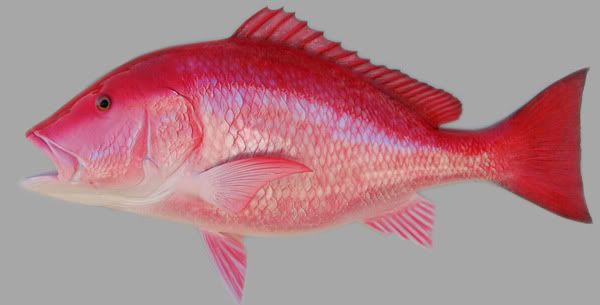

Please watch this video I recorded of a Giant Swallowtail on our first year Purple Coneflower plants.
I started these Purple Coneflowers from seed for the first time in March. Purple Coneflowers are among the best perennials for attracting butterflies such as Monarchs, Swallowtails, Gulf Fritillaries, and Painted Ladies. Hummingbirds will come, but not only for nectar, but the small insects the blossoms will attract. Perhaps the best feature is the blooms will remain colorful for a very long time so it can be enjoyed for many days.
I obtained my coneflower seed in the summer of 2010 when we vacationed in Indiana to visit family and pickup my son from Ohio. My grandma had a few dried seed pods on her coneflower plants so I took a couple home with me. The seed can be difficult to actually harvest because of the prickly pods shown below. But fortunately the coneflower is relatively easy to sprout and grow from seed. Plants will often self-seed in gardens too. An ideal location is full sun with well-drained soil, but they will grow in partial sun. 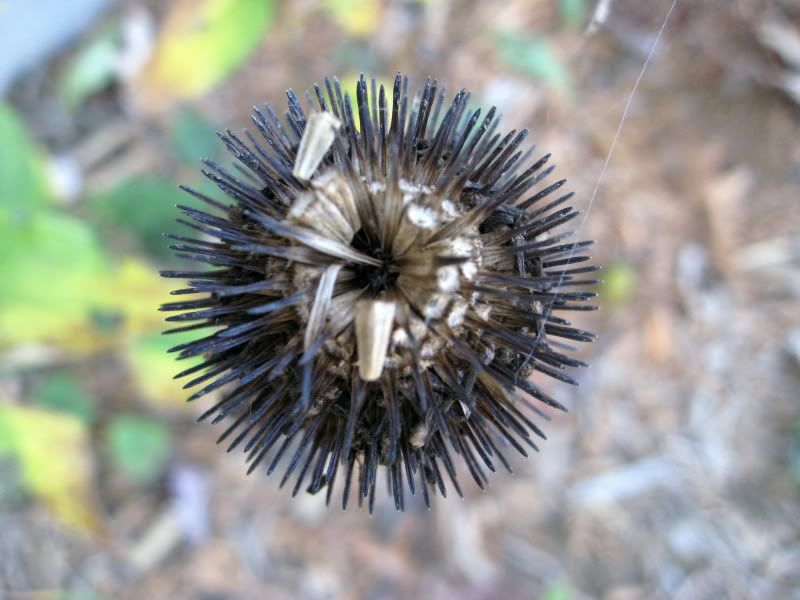
Here's a few garden photos I took today. The zinnias are the Burpee Candy Cane Mix, and the gulf frit butterflies are always attracted to them. I'm also anxious to see this plumeria bloom for the first time since I grew it from seed almost 2 years ago. There are about 5 tropical hibiscus plants that I grew from seed 2 years ago too, and should bloom for the first time this year. The question is what color marks will be on the flowers. I don't know until they bloom for the first time. These hibiscus should be really interesting since they were seeds I purchased on ebay from Australia. 

With two bird feeders filled with sunflower seed almost year-round, it's going to attract a host of species 24 hours a day. During the daylight hours you'll see the birds and the squirrels, but do you ever wake up in the morning wondering why your bird feeder is empty? If it's accessible to raccoons, thats more likely what happened but raccoons are not likely to raid those feeders hanging from shephard hook poles. The problem could be rats, at least thats what happened to us. We have a large shephard hook supporting a bird feeder at the top. About halfway up the pole is a plastic squirrel baffle. So how did the rats access my feeder if there's a baffle blocking the path? Easy, they chew a hole in the baffle just big enough to squeeze through it. Rats love sunflower seed, and they breed like crazy so I took matters into my own hands. I started with my old Red Ryder BB gun and shot a couple but I was having trouble with the BB's not shooting very accurate. So I purchased a scoped air rifle from Amazon for $75, the Remington Airmaster 77. Combined with Crosman 0.177 caliber pellets and a 4x scope, this air rifle has proven very accurate and powerful. I've nailed several rats so far and now started noticing not as many. In fact, last night I didn't see any at all. I know there's more though, it's just a matter of catching them off guard. Here's a photo of my new air rifle, everything you see is what you get in the box.
Wild rats can host many diseases and parasites, some fatal to humans and pets. A common myth is many rats carry rabies, though this is not entirely true. It's not impossible for a wild rat to carry rabies, but it's not likely. There have been very few cases reported in the United States of a person actually contracting rabies from a wild rat. If biten or exposed to rats though, your more likely to get Rat-Bite Fever (bacteria infection), parasite worms, Hepatitis E., and several other bacteria and viruses. They also spread fleas and ticks to your pets, and eventually your homes. So don't comment about how cruel it is to shoot rats. I don't go outside with guns blazing like rambo, shooting everything I see. I'm only targeting rats and shooting them with air rifles is alot safer than setting out live traps or even rat poison. With live traps, squirrels can injure themselves if caught. With poison, you risk poisoning yourself if not handled correctly and poisoning anything that touches it, raccoons, squirrels, dogs, cats, etc.



Some milkweed and alyssum 'snow crystals' started from seed...
Here's a group of cosmos I started from seed
Sorry for the lack of updates! I've been busy maintaining the garden with the lack of rain, controlling a wild rat problem, and my grandparents came to visit Florida for a couple weeks. I've also been doing some bass and catfishing, see my fishing blog at http://average-fisherman.blogspot.com
Milkweed Bugs, I wrote about these bugs a couple months ago. The tropical milkweed planted next to the bird bath was infested with these suckers for awhile. The plant was showing alot of damage, so much the butterflies wouldn't even touch it. Using insecticidal soap did little to nothing, there were just too many milkweed bugs ranging from baby nymphs to adults. Fortunately milkweed is a resilient plant and grows back very fast. So I just chopped off all the stems and bagged them in a ziploc bag. The milkweed bugs tend to cluster around the very tops of the stems where new growth would occur. Once all the stems were cut and bagged, there were no more milkweed bugs on the plant. Within weeks, the milkweed bounced back and now it looks great.
Gulf Fritillary butterflies are very popular here and almost always sighted when I walk outside in the garden. They love the Candy Cane Zinnias, Yellow Lantana, Marigolds, and of course the Passiflora (gulf frit host plant). I only have one potted passiflora, and it's loaded with caterpillars and eggs. In fact, as I'm looking outside now I can see two Gulf Frit butterflies flirting with each other in the air. The Monarchs are still hanging around, about 1 or 2 a day seems to be the average. There was a Giant Swallowtail visiting a Yellow Lantana for awhile but I haven't seen any swallowtails in the last couple of weeks. I even planted some dill and parsley to attract Black Swallowtail caterpillars but no luck so far.
Yesterday while doing some outdoor chores, we found a Florida Mockingbird nest inside a Robellini palm tree in our front yard. There are 4 baby mockingbirds inside the nest, still very young with their eyes shut.
Here's some info about the Mockingbird nesting habits. The nest is constructed by both the male and female, though the male does most of the work while the female perches close-by watching out for predators. Three to five eggs are laid by the female and then she incubates the eggs for about 11 to 13 days. Once the eggs are hatched, both parents are responsible for feeding the baby chicks for about 12 days. So the entire timeframe from incubation to fledging is 23 to 25 days.
The parents will aggressively protect their nest and surrounding area against other birds and animals. When a predator is persistent, mockingbirds from neighboring territories, summoned by a distinct call, may join the attack. Other birds may gather to watch as the mockingbirds harass the intruder. In addition, it is not unheard of for mockingbirds to target humans. They are absolutely unafraid and will attack much larger birds too, even hawks. I've actually witnessed this a few days ago as two mockingbirds chased away a hawk from a tree.
I found these red/orange and black colored insects gathered on some milkweed plants. In fact, they have established a large population on one plant to the point where some leaves are growing deformed and some leaves have been sucked dry of plant tissue. These insects are called the Milkweed Bug, and are more of a nuisance than a threat to the milkweed plant. They are commonly found in small groups on stems, leaves, and seed pods sucking the juices from plant tissue. Controlling these bugs can be tricky because you don't want to spray the Monarch larvae with harmful chemicals. So you can either live with the damage, squish the bugs, or spray with a low dose of insecticidal soap.
Pictured below is the Milkweed Bug life cycle. 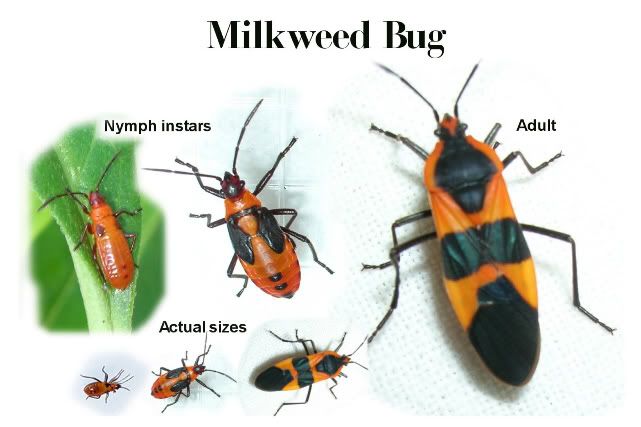
A pair of cardinals have recently made a nest at my sisters new house. The nest is easily visible outside a dining room window where a small tree grows. Here's a few pictures of the female cardinal nesting in her new home..

In about two more weeks, spring officially begins. And for a majority of February this year, we've had a nice warm trend of weather. I've pruned all the Hibiscus down and wacked the Crape Myrtles back. New growth can be seen on all plants already, so there's little to no casualties from the winter freezes this year.
On February 18th, I started some annual flower seeds in the Burpee Ultimate Growing tray. I sowed 12 cells of Sweet Alyssum "Snow Crystals", 12 cells of Zinnia "Candy Cane Mix", 10 cells of Milkweed, 12 cells of Petunia and 18 cells of Impatiens.
So two weeks later, most have sprouted by now. The Petunia seed must be old based on poor germination rates. The Impatiens has just started to germinate. And the Zinnia and Milkweed have been transplanted into larger 3.5" pots for maturing.
I have 11 pots of Zinnia "Candy Cane Mix" ; 10 pots of Milkweed ; and 12 cells of Alyssum to be transplanted into pots next.
It has been a slow month in the garden, not much going on. With some hard freezes in December and January, I managed to safely protect my container plants such as Hibiscus, Ornamental Peppers, and Plumeria. It looks like they will be fine. In fact, alot of them still have green leaves. As for outdoor plants in the ground, we'll see how well they recover when I prune them down in March. Sometime in February, I'll be starting some annual flowers from seed so I'll have more content to blog about, but until then, I'm just waiting for the warmer weather.



